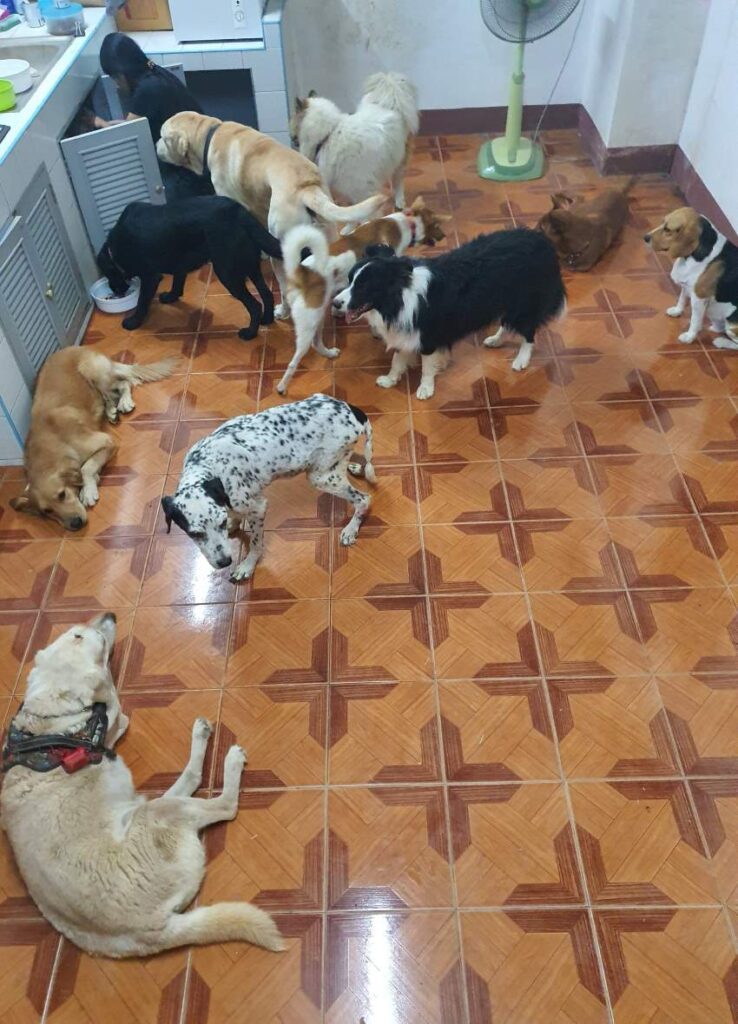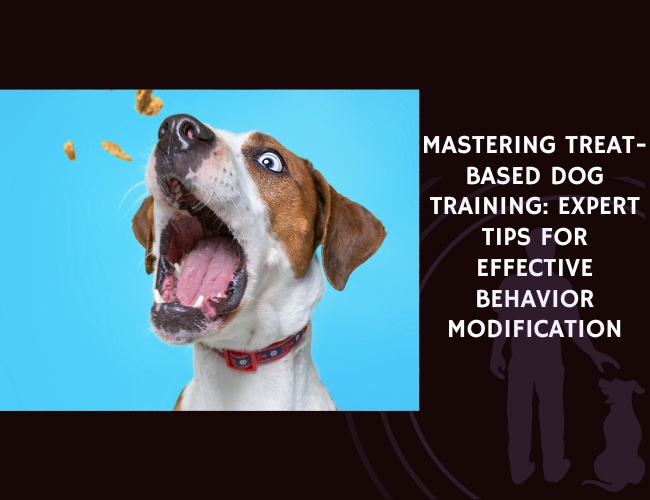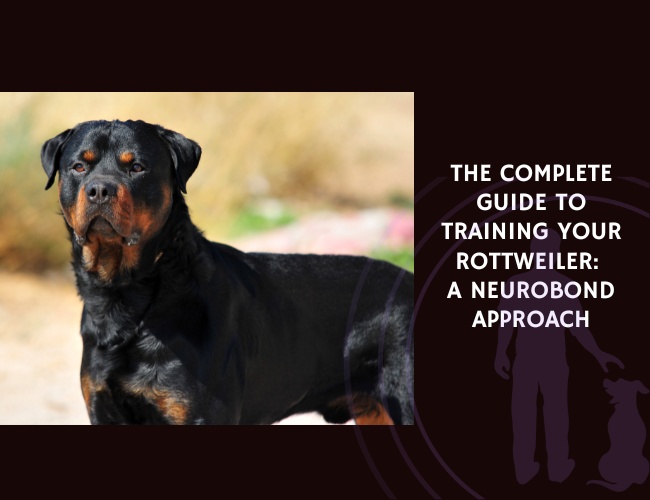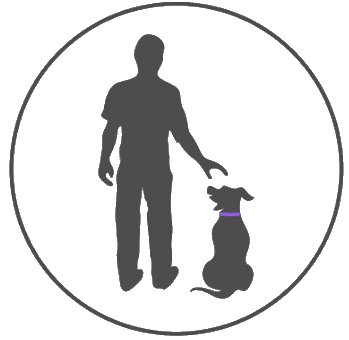Understanding Positive Reinforcement in Dog Training
Definition and Principles of Positive Reinforcement
Positive reinforcement is a technique in dog training that involves rewarding dogs for desired behaviors to increase the likelihood of those behaviors being repeated in the future. This method hinges on the principles of operant conditioning, a concept developed by B.F. Skinner. Operant conditioning dictates that behaviors followed by pleasant outcomes, such as rewards, are more likely to be repeated. One of the primary tools used in positive reinforcement is treats, which act as immediate rewards that dogs find motivating.
Role of Treats as Primary Reinforcers
Treats serve as primary reinforcers in dog training because they provide instant and tangible rewards. When a dog performs a desired behavior, offering a treat right away creates a strong association between the behavior and the reward. This immediacy is crucial in helping the dog understand what specific action is being rewarded, making treat-based training highly effective for reinforcing positive behaviors.
To maintain the integrity of the training process, it’s essential to give treats only after the desired behavior has been performed. This prevents treats from becoming bribes, which can undermine training effectiveness.
How Treat-Based Training Strengthens the Dog-Owner Bond
Using treats as part of positive reinforcement not only modifies behavior but also strengthens the bond between the dog and the owner. Consistent, positive training sessions foster trust and cooperation. When a dog associates training with positive experiences, such as receiving treats, it becomes more eager to participate and engage with its owner. This cooperative relationship enhances the overall training experience and reinforces the dog’s trust in the owner.
Moreover, treat-based training can make learning new commands and behaviors a fun and rewarding activity for both the dog and the owner, further enhancing their bond. This positive interaction builds a solid foundation for ongoing training and reinforces the importance of clear communication and mutual respect in the dog-owner relationship.
As we delve deeper into the science behind treat-based training, understanding the principles of operant and classical conditioning, as well as the importance of timing and consistency in reward delivery, can greatly enhance the effectiveness of your training sessions.
The Science Behind Treat-Based Training
Operant Conditioning Principles and Their Application
Operant conditioning, developed by B.F. Skinner, is a cornerstone in behavior modification. This principle posits that behaviors followed by positive outcomes, or rewards, are more likely to be repeated. In the context of dog training, treats act as positive reinforcers. When a dog performs a desired behavior and receives a treat, the likelihood of the behavior being repeated increases significantly. This method of using treats to reinforce good behavior is backed by numerous studies.
Classical Conditioning in Treat-Based Training
Classical conditioning involves creating associations between a neutral stimulus and a significant stimulus to elicit a conditioned response. For example, a dog learns to associate the command “sit” with receiving a treat. Over time, the dog sits upon hearing the command, expecting a treat. This method leverages the dog’s natural learning processes to build a strong behavioral response to commands.
Importance of Timing and Consistency in Reward Delivery
The timing and consistency of reward delivery are crucial for the success of treat-based training. Rewards should be given immediately after the desired behavior to reinforce the connection. Any delay can confuse the dog, leading to inconsistent results. Consistency in rewarding the same behavior helps solidify the learning process, making the behavior more reliable over time.
Maintaining a routine where behaviors are consistently followed by immediate rewards ensures that dogs understand precisely which behavior is being reinforced. Avoid using treats as bribes; instead, give treats only after the desired behavior is performed to maintain the integrity of the training.
By understanding these conditioning principles, dog owners can utilize treats more effectively, ensuring rapid learning and long-term retention of desirable behaviors.
Choosing the Right Treats
The effectiveness of treat-based training is significantly influenced by the type of treats you choose. The right treats can motivate your dog, making the learning process smoother and more enjoyable for both of you.
High-Value Treats for Challenging Behaviors
High-value treats are particularly effective for teaching new or difficult behaviors. These treats are usually more enticing and flavorful than regular kibble, making them highly motivating for dogs. Some examples include cooked chicken, pieces of cheese, or liver treats.
Using high-value treats can help your dog stay focused and engaged during challenging training sessions. For instance, if you are trying to teach your dog to come when called in a distracting environment, offering a high-value treat can enhance their willingness to obey the command.
Low-Value Treats for Routine Commands
Low-value treats are best suited for reinforcing well-established behaviors. These treats can be something simple, like commercial dog biscuits or pieces of dry kibble. Since these treats are less exciting, they are more appropriate for routine commands like “sit” or “stay” that your dog has already mastered.
Using low-value treats for simple commands helps maintain your dog’s motivation without making them dependent on high-value rewards for every task. This differentiation creates a clear reward hierarchy, helping your dog understand when extra effort is expected.

Healthy Treat Options and Nutritional Considerations
It’s important to consider the nutritional value of the treats you choose. Overuse of treats can lead to weight gain and other health problems. Here are some healthy treat options:
- Carrots and Apple Slices: These are low in calories and high in vitamins. Just be sure to avoid apple seeds, as they can be harmful to dogs.
- Small Portions of Boiled Meat: Pieces of chicken or turkey can be very appealing to dogs while also being healthy.
- Homemade Treats: Making treats at home allows you to control the ingredients, ensuring they are healthy and safe for your dog.
Additionally, commercial treats offer convenience and a wide variety, but it’s essential to read the labels for potential allergens or low-quality ingredients.
Nutritional Considerations
While treats are an effective motivator, it’s critical to balance them with your dog’s overall diet. Ensure that treats do not exceed ten percent of your dog’s daily caloric intake to prevent obesity. Adjust your dog’s meal portions accordingly if you find you’re using many treats during training sessions.
Choosing the right treats is foundational to the success of treat-based training. While high-value treats are excellent for motivating your dog during challenging tasks, low-value treats maintain engagement for routine commands. By integrating healthy treat options and considering nutritional balance, you ensure that treat-based training is both effective and safe for your dog’s health.
Remember, the goal is to find what works best for your dog and to use treats thoughtfully to enhance learning and bonding.
Effective Training Strategies
Establishing a Clear Reward Hierarchy
The first step in creating an effective treat-based training regime is establishing a clear reward hierarchy. This means categorizing treats based on their value to your dog.
- High-value treats: These are extremely desirable treats, like chicken, cheese, or liver. Use these for teaching new or challenging behaviors, such as recall or complex tricks. High-value treats should be reserved for moments when you need maximum attention and effort from your dog.
- Low-value treats: Examples include dry kibble or commercial dog biscuits. These are effective for reinforcing well-established behaviors and routine commands such as sitting or lying down.
By distinguishing between high- and low-value treats, you can maintain your dog’s motivation and ensure they remain engaged throughout training sessions.
Gradually Fading Treats While Maintaining Behavior
While treats are excellent for initial training, it is crucial to avoid over-reliance. Gradually fading out treats ensures your dog will continue to perform the desired behaviors without expecting a reward every time.
- Consistency is Key: Initially, reward your dog with a treat immediately after they complete the desired behavior to reinforce the connection.
- Variable Reinforcement Schedule: Once the behavior becomes consistent, start substituting treats with verbal praise or physical affection intermittently, ensuring that your dog still receives positive feedback. This step helps to maintain the behavior while reducing treat dependency.
- Extend Time Between Rewards: Gradually increase the time or number of correct responses required before a treat is given. This approach will encourage your dog to perform the behavior reliably without expecting immediate treats every time.
Pairing Treats with Verbal Cues and Physical Praise
Combining treats with verbal cues and physical praise can significantly boost the effectiveness of your training. Just as with treat fading, this method ensures your dog learns to associate verbal and physical rewards with positive outcomes.
Verbal Cues
Use enthusiastic and consistent verbal praise, such as “Good job” or “Well done,” immediately after your dog performs the desired behavior. Consistent language helps reinforce the command and links the positive behavior to your words.
Physical Praise
Physical affection, like petting or scratching your dog’s favorite spots, can also strengthen the bond and reinforce the behavior. Many dogs are highly motivated by physical contact, so incorporating this into your training routine can be exceptionally effective.
By pairing treats with these additional forms of positive reinforcement, you create a comprehensive reward system that maintains your dog’s enthusiasm and compliance even when the treats are phased out.
Adapting these strategies will help you develop a resilient, effective training regime that ensures long-term success and a happy, well-behaved dog.

Addressing Specific Behaviors
Teaching Basic Obedience Commands
Teaching your dog basic obedience commands such as “sit,” “stay,” “come,” and “down” can be made more effective through treat-based training. Treats help establish a clear association between the command and the desired action. For instance, when teaching “sit,” hold a treat above your dog’s nose and slowly move it over the dog’s head while giving the command. This encourages the dog to sit, and when they do, immediately reward them with the treat. This immediate reward creates a strong connection between the behavior and the reward.
Counter-Conditioning for Fear and Anxiety
For dogs with fear and anxiety issues, treats can be a powerful tool for counter-conditioning and desensitization. Counter-conditioning involves changing a dog’s emotional response to a particular trigger by consistently pairing it with positive experiences, like receiving treats. For example, if your dog is afraid of strangers, you can reward them with treats whenever they remain calm in the presence of a new person. Over time, the dog learns to associate the trigger (stranger) with something positive (treat), reducing anxiety and fear.
Modifying Undesirable Behaviors
Treats can also be used effectively to modify undesirable behaviors. The key is to reward an alternative, more desirable behavior. For example, if your dog tends to jump on people, you can redirect this behavior by teaching the dog to sit instead. When your dog starts to jump, give a “sit” command and reward them with a treat when they comply. This way, the dog learns that sitting brings positive outcomes, while jumping does not.
Using treats as primary reinforcers creates a strong link between the desired behaviors and rewards. Consistency and timing are crucial—immediate treat delivery reinforces the connection, while consistency in rewarding the same behavior solidifies the learning process. Over time, you can maintain the desired behavior by gradually reducing the reliance on treats, incorporating verbal praise, and using other forms of positive reinforcement.
Understanding these foundational techniques will set you on the path to a well-behaved dog, ready to tackle new challenges and succeed in various training scenarios.
Common Challenges and Solutions
Training your dog with treats can be highly effective, but it does come with its set of challenges. Let’s explore some common issues and how to address them.
Preventing Treat Dependency and Over-Reliance
One of the frequent concerns with treat-based training is the risk of your dog becoming overly reliant on treats. The key to preventing this is to ensure that treats are used as rewards, not bribes. Treats should only be given after the desired behavior is performed. This maintains the integrity of the training process and keeps your dog motivated to earn the reward.
To avoid over-reliance, gradually fade out treats as your dog becomes consistent in performing the desired behaviors. Increase the use of verbal praise and physical affection to reinforce the behavior. This way, your dog learns to respond to your commands based on praise and affection even when treats are not present.
Managing Weight Gain and Obesity Risks
Excessive treat use can contribute to weight gain and obesity in dogs. To manage this risk, use treats that are low in calories and feed treats in small quantities. Healthy options include carrot sticks, apple slices (without seeds), or small pieces of boiled meat. These are both nutritious and appealing to dogs.
Adjust your dog’s meal portions to account for the extra calories from treats. For instance, if you’re using treats during a training session, reduce the amount of food your dog gets at dinnertime. This helps to balance the overall caloric intake and keeps your dog at a healthy weight.
Dealing with Food Allergies and Sensitivities
Some dogs may have allergic reactions or intolerances to certain ingredients in commercial treats. It’s essential to be aware of your dog’s specific dietary needs. Opt for hypoallergenic treats or consider making homemade treats using limited ingredients that you know your dog can tolerate well. Ingredients like plain cooked chicken or carrots can often be safe bets.
Always observe your dog for any signs of allergic reactions, such as itching, swelling, or digestive issues. If you notice any adverse effects, discontinue the use of the treat immediately and consult your veterinarian for alternative options.
Transitioning to Other Forms of Reinforcement
While treats are a great way to start training, diversifying the rewards can keep your dog’s motivation high. Incorporate verbal praise, toys, and playtime as forms of positive reinforcement. For highly active dogs, a quick game of fetch can be as exciting as a tasty treat.
By balancing treats with other rewards, you create a well-rounded reinforcement strategy that doesn’t rely solely on food. This not only maintains your dog’s engagement but also ensures a healthier training routine.
Effective training requires patience, creativity, and consistency. Facing these common challenges head-on will help you build a strong, cooperative, and healthy relationship with your dog. Continue to explore different strategies and reinforce positive behaviors, setting the stage for long-term success in your training endeavors.
Alternative Reinforcement Methods
Using Verbal Praise Effectively
Treats are incredible motivators, but alternative reinforcement methods can also be highly effective. One such method is verbal praise. Dogs are highly attuned to the tone of their owner’s voice. Enthusiastic verbal praise can be a powerful motivator when paired with training. This not only encourages the desired behavior but also fosters a stronger bond between the dog and owner. To maximize the effectiveness of verbal praise:
- Use a happy, upbeat tone. Dogs respond well to positive energy.
- Be consistent with your words. Choose phrases like “good job” or “well done” and use them consistently.
- Collaborate with physical affection. This reinforces the positive association.
Incorporating Toys and Play as Rewards
For highly active dogs, toys and play can be as rewarding, if not more, than treats. Incorporating these into training sessions can help sustain the dog’s interest and enthusiasm. To effectively use this method:
- Identify favorite toys. Use toys that your dog shows high interest in, such as a squeaky toy or a favorite ball.
- Schedule playtime as a reward. After your dog completes a desired behavior, engage in a brief game of fetch or tug-of-war.
- Mix play with training. Activities like agility training can simultaneously serve as exercise and a fun reward.
This approach is not only rewarding for the dog but also beneficial for its physical health, promoting an overall balanced and healthier training regimen.
Balancing Treats with Other Forms of Positive Reinforcement
While treats are an integral part of positive reinforcement, balancing them with other forms of reinforcement helps in several ways:
- Prevent over-reliance. When you alternate between treats, toys, and verbal praise, your dog is less likely to become dependent on treats alone.
- Mitigate health risks. Using non-food rewards helps manage weight, which is crucial to prevent obesity and related health issues.
- Addressing sensitivities. For dogs with food allergies, hypoallergenic treats or completely non-food rewards ensure that training remains enjoyable and safe.
To implement a balanced reinforcement strategy:
- Start training sessions with high-value treats for new or challenging behaviors.
- For routine commands, introduce lower-value treats or switch to verbal praise.
- Gradually fade out treats, pairing verbal cues and physical affection to maintain desired behaviors.
- Use toys and play intermittently to keep the training dynamic and engaging.
Adopting a diversified approach to reinforce positive behavior ensures a well-rounded and effective training process. Encouraging behaviors this way not only makes training sessions enjoyable but also strengthens the bond you share with your dog. By incorporating various forms of rewards, training becomes a holistic process that supports your dog’s mental and emotional well-being.
Best Practices and Success Tips
Starting with High-Value Treats for New Behaviors
When introducing new or challenging behaviors, the use of high-value treats is essential. High-value treats, such as cooked chicken, cheese, or liver, are more enticing and can motivate your dog more effectively. These treats help create a strong positive association with the new behavior, making it more likely to be repeated.
For example, if you’re teaching your dog to “roll over” — a complex command that requires multiple steps — using delicious, high-value treats can keep your dog engaged and eager to learn. Begin by rewarding small progress towards the final behavior, reinforcing each step with a high-value treat until the behavior is learned.
Maintaining Consistency in Reward Delivery
Consistency is crucial in reinforcing desired behaviors. This means delivering the treat immediately after the desired behavior, ensuring the dog clearly associates the treat with the action. Consistency also extends to ensuring all family members or anyone involved in training use the same commands and reward the behavior in the same manner.
If your dog performs a “sit” command, the treat should be given within seconds. Delayed rewards can confuse the dog, making it harder for them to link the treat with their action.
Gradually Transitioning from Treats to Other Rewards
Over time, relying solely on treats may not be sustainable. Gradually reducing their frequency helps prevent dependence.
- Intermittent Treating: Initially, start by treating every time the behavior is performed. Gradually switch to a schedule where only some successful attempts are rewarded with treats.
- Introducing Verbal Praise and Physical Affection: Pair treats with enthusiastic verbal praise and petting. Over time, increase the emphasis on these other forms of reward while decreasing treat usage. For instance, say “Good job!” and pat your dog immediately after they perform a command.
- Incorporating Play and Toys: For dogs that enjoy play, using a favorite toy or a brief play session as a reward can be very effective. This is particularly useful for maintaining motivation without relying heavily on treats.

Establishing a Clear Reward Hierarchy
Once your dog has learned the basic commands, it’s essential to establish a clear reward hierarchy. Reserve high-value treats for challenging or new behaviors and use low-value treats for simple, routine commands. This approach helps maintain your dog’s motivation across different training stages.
For example, an everyday “sit” might warrant a piece of kibble, whereas a new trick or an obedience task in a distracting environment would be rewarded with a high-value treat.
By starting with high-value treats, maintaining consistency, and gradually transitioning to other forms of rewards, you can effectively train your dog while avoiding treat dependency.
These best practices ensure that both you and your dog have a positive and productive training experience.










